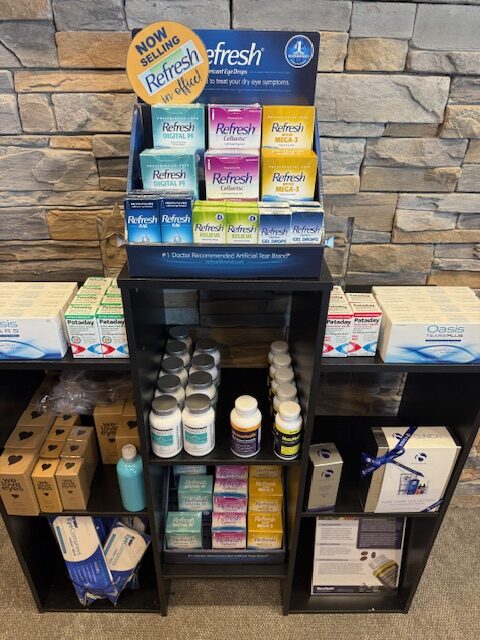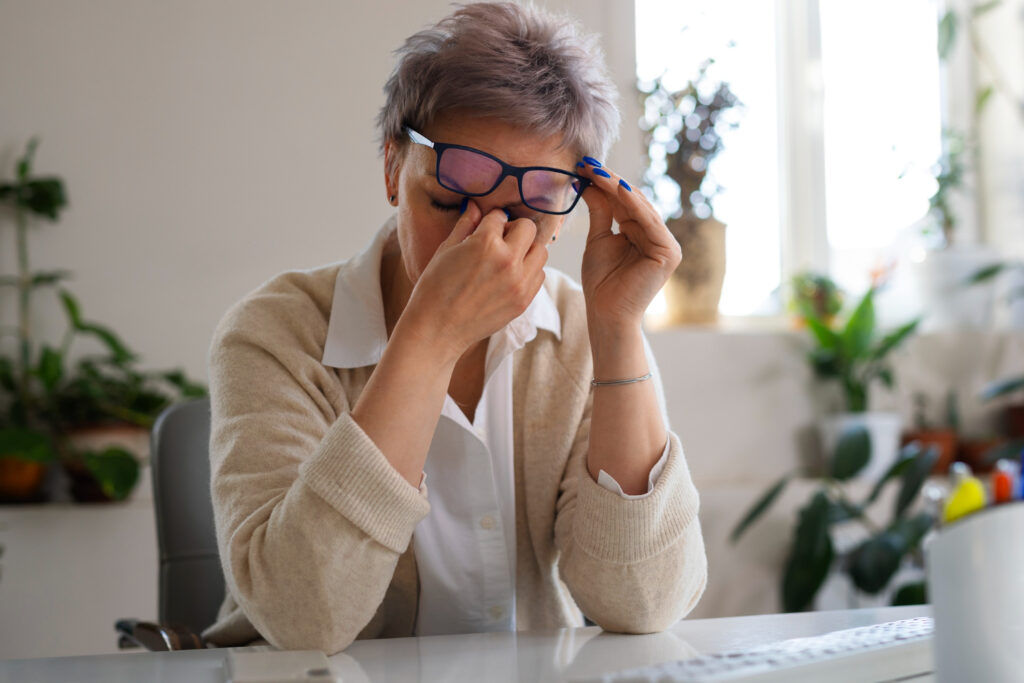Hey guys, this is Dr. Jacob Allred from Insight Eye Care Glenpool. Today I wanted to talk about dry eye as well as some of my favorite innovations for treatment.
Dry Eye Disease (DED) or Dry Eye Syndrome (DES) are two synonymous terms that label a chronic issue that many people deal with. Dry eye rarely has one root cause; there are often MANY different factors which exacerbate symptoms of dryness, stinging, burning, watering, itching, fluctuating vision, light sensitivity, and the urge to blink too frequently (just to name a few).
In my experience with talking about dry eye with other eye care providers, doctors can be intimidated or overwhelmed with the challenge of diagnosing and treating these symptoms. Frequently it can present itself as a complex jigsaw puzzle of signs that don’t align AT ALL with patient symptoms
As an example, I’ve had multiple patients present with no complaints. When I get them behind the microscope however, I see that their eyes are massively dry to the point where permanent damage could result in vision loss. This is a dramatic example a type of dry eye that seems to be getting more and more common: Neurotrophic Keratitis (NK). With neurotrophic keratitis, the nerves of the cornea (front of eye) are not sending proper signals to the brain.
Without signals of discomfort, the brain doesn’t stimulate tear production or blink as frequently. The result is a cornea full of sick and dying cells and a patient none the wiser. When this happens we have two different options to revive the nerves. First, we can try what’s called an amniotic membrane. This is a special contact lens that utilizes stem-cell like, lab-grown tissue as well as collagen. The pro to this is it only has to be in for 48 to 72 hours, and after removal it continues to stimulate nerve function for months following. The con is when the membrane is on the eye, that eye is extremely blurry for the time being. This is why we always do one eye at a time.
The second option to treat NK is a drop called Oxervate, which is used 6 times a day for 8 weeks. The pro is you have no downtime when it comes to vision. The con is the dosing schedule can be taxing and occasionally the cost of this drop can be a barrier to treatment.
Maybe that’s not you. Your eyes are dry and they feel dry. Why is that? Well, I’d need to give you an eye exam to tell you that for sure. There are so many driving factors that can be at play. Maybe you’ve tried a multitude of artificial tears to no avail. Artificial tears are great at treating SYMPTOMS, but NEVER TREAT THE ROOT CAUSE. They are always a great starting point, and because of their inexpensive price and high accessibility I agree that they are always worth trying as a starting point.
I always caution my patients that preservatives in eye drops can actually make the eyes MORE DRY in the long run despite the immediate relief they may bring. For that reason, preservative free eye drops are essential for dry eye patients. Different types of OTC tears incorporate different things which can work better or worse for people. I always encourage patients in this preliminary artificial tear stage to try multiple formulations of preservative free drops and compare the longevity of relief rather than how they feel on the way in.

Once we understand that artificial tears aren’t going to work, we have to take the leap to either a prescription drop or in office procedure. Which direction we take that leap depends on the root cause. For inflammatory dry eye, drops like Restasis or procedures such as IPL and LLLT are great for reducing inflammation in and around the eye.
In another blog post I talked about IPL and LLLT if you are curious! For meibomian gland dysfunction (eye not producing enough oil), a prescription drop like Meibo can go a long way in keeping the eye comfortable without feeling like your vision is blurred from a “greasy” eye drop. LLLT is again another great option as well as warm compresses paired with eyelid massage.
In patients that just don’t have enough tears, Tryptyr is a new eyedrop that helps the eye produce tears on its own. Tyrvaya is a nasal spray which does the same thing. Lacrifill is an in office procedure which helps the tears stay around for longer. Chances are you don’t have just one type of dry eye, and the aforementioned treatments need to be paired together to get the relief you’re looking for! Dry eye patients are my absolute favorite to work with. Often times they have been struggling for years and after we solve that puzzle they are forever grateful.
Please don’t hesitate to swing by Insight Eye Care in Glenpool or Jenks if you are able to relate to the troubles many have and are excited by the possibility of a new treatment!
Cheers,
Dr. Jacob Allred

